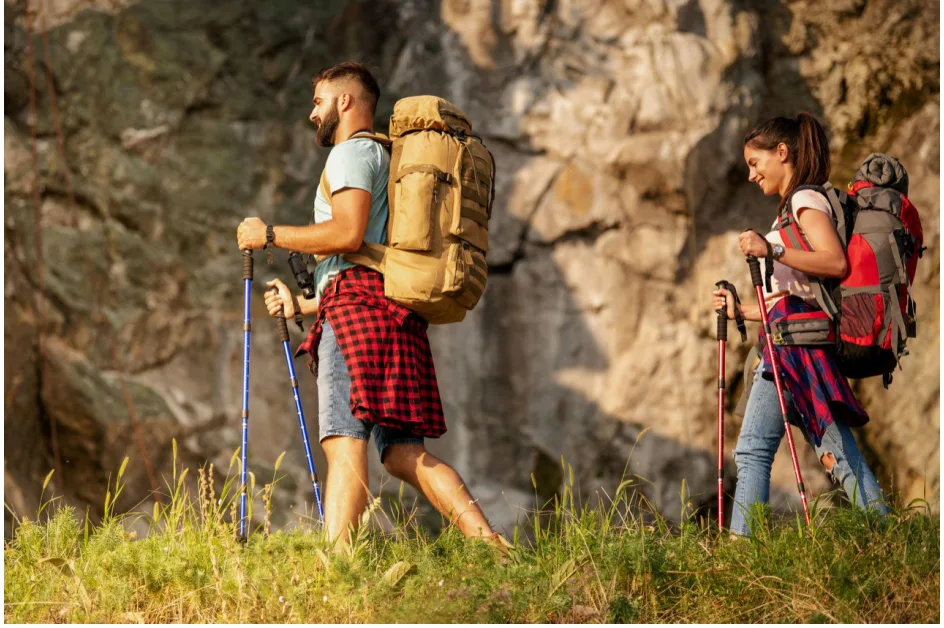Gabriel Carabello’s Hiking Tips for Beginners
Hiking is one of the most rewarding ways to reconnect with nature while improving physical stamina and mental well-being. As highlighted by Gabriel Carabello, whether you’re trekking through a shaded forest trail or exploring a quiet coastal bluff, the benefits of hiking extend far beyond just physical exercise. It encourages mindfulness, reduces stress, and builds a sense of accomplishment. With the right planning and awareness, even someone new to the outdoors can build confidence and begin a lifelong love for hiking.
Benefits of Hiking
Hiking is an easy way to get active without needing specialized training or expensive equipment. Many trails are designed for all skill levels, making it a flexible option for people just starting their outdoor journey. Whether it’s a walk through a neighborhood reserve or a gentle climb in a state park, the trek can be adjusted to your comfort level.
Spending time on the trail can also help reduce stress and improve mood. Being surrounded by nature, away from screens and daily distractions, allows for mental clarity and a sense of calm. Some people find it easier to stay consistent with hiking than with indoor workouts because the changing scenery adds variety. Even just 30 minutes of walking in a wooded area can noticeably lift your mood.
Essential Gear for a Comfortable Hike
Wearing the right shoes is one of the most important choices beginners can make. Trail runners offer a lighter option for well-maintained paths, while hiking boots provide ankle support and better traction on rocky or uneven terrain. Breaking in footwear before a hike helps prevent blisters and discomfort. A poor shoe choice can turn an enjoyable hike into an uncomfortable ordeal.
Layering clothing allows you to stay comfortable as temperatures shift. A moisture-wicking shirt paired with a lightweight jacket can handle both warm sun and cool breezes. Weather can change quickly, especially in higher elevations, so it’s smart to carry a packable rain shell even on a clear day. Lightweight gloves or a beanie can also be tucked into your pack for unexpected chills.
A small daypack should fit just enough to keep you prepared without weighing you down. Water is a must, whether carried in a bottle or a hydration bladder. Add a few high-energy snacks, a map or GPS device, and sun protection like a hat and sunscreen. A headlamp and a compact first aid kit round out a solid setup.
Planning for a Safe Hike
Taking time to research your hiking route can make a huge difference in your experience. Knowing the length, elevation gain, and trail conditions helps you choose a hike that matches your current fitness level. Resources like official park websites and hiking apps often include recent trail updates and user reviews.
Weather plays a big role in trail safety. Cloud cover, wind, and temperature shifts can turn a mild trail into a tough challenge. Checking the forecast before you head out helps avoid surprises and lets you pack appropriately. Trails that are dry and easy in the morning might become muddy or slippery after rainfall. Fog or heavy mist can also reduce visibility, affecting navigation.
Knowing the terrain in advance means fewer surprises once you’re out there. Some trails have steep drop-offs, loose gravel, or creek crossings that aren’t obvious on a map. A little extra research gives you a better sense of how to pace yourself.
Trail Safety and Awareness
Letting someone know your hiking plans—such as your expected route and return time—adds a layer of safety that’s easy to overlook. If something unexpected happens, that small step can make a big difference in how quickly help arrives. Even a short delay can trigger concern if no one knows where you are.
It’s easy to get turned around, especially in areas where trails intersect or markings fade. Sticking to designated paths helps reduce the risk of getting lost and protects fragile ecosystems. Many parks provide color-coded trails or clear signage to guide hikers along the correct route. Carrying a printed map or an offline GPS app can provide backup if your phone loses signal.
Wildlife encounters aren’t always dangerous, but knowing how to behave around animals helps prevent problems. Staying calm and giving space usually keeps both you and the animals safe. Being mindful of your surroundings, including changes in weather or trail surface, can help you adjust your pace and stay alert.
Choosing the Right Trails
Not every trail requires a long drive or mountain climbing gear. Many local parks, greenways, and nature centers offer beginner-friendly options that are well-maintained and easy to follow. These shorter trails often have gentle slopes and scenic spots that make the experience enjoyable without being overwhelming. Some even include benches or interpretive signs along the way.
Choosing a loop trail over an out-and-back route can keep the scenery fresh and make the hike feel more like an adventure. Some beginners enjoy returning to the same trail a few times to build confidence before exploring new areas. Apps that rate trails by difficulty and user feedback can also help narrow your options.
Building Confidence and Enjoying the Experience
Starting early in the day makes a big difference. Trails tend to be quieter, temperatures are cooler, and there’s more daylight to enjoy the scenery. It also gives you extra time in case the hike takes longer than expected. Morning hikes also offer a better chance of seeing wildlife and avoiding afternoon weather changes.
Following Leave No Trace principles—like packing out trash and staying on the trail—helps preserve the beauty of the landscape and keeps it enjoyable for others. Over time, as you gain confidence, you might find yourself naturally progressing to longer or more challenging hikes without even realizing it. Each hike adds to your comfort level and trail knowledge.






